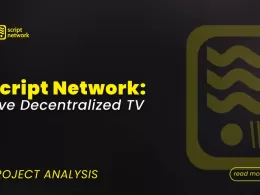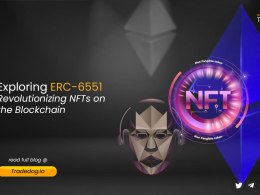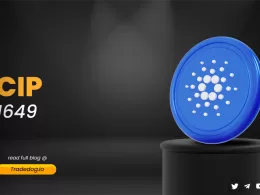Quick Links
In the ever-evolving landscape of blockchain technology, Ethereum has consistently been at the forefront of innovation. On September 15, 2022, it underwent a groundbreaking transition from a proof-of-work (PoW) to a proof-of-stake (PoS) consensus mechanism, known as the Ethereum Merge. This shift not only made Ethereum more environmentally friendly but also had profound implications for its supply dynamics. In this blog, we delve into the impact of PoS and shed light on the pivotal role played by the EIP-1559.
The Paradigm Shift: From PoW to PoS
The transition to a PoS mechanism was a strategic move aimed at making Ethereum more environmentally sustainable. In a PoS system, market participants are required to hold a minimum amount of Ether ~ 32 ETH to validate transactions and earn rewards, replacing the energy-intensive mining process of PoW. This shift has not only reduced Ethereum’s carbon footprint but has also significantly impacted its supply dynamics.
The Ethereum PoS blockchain operates in intervals called slots, each lasting approximately 12 seconds. During each slot, a validator has the opportunity to propose a block, but it’s not mandatory. These slots are organized into epochs, with each epoch consisting of 32 sequential slots. For every epoch, a committee of 128 validators is algorithmically selected by the protocol. Among them, only one validator is chosen to propose a block in the next slot. The other validators in the committee issue attestations, confirming that the proposed block and its transactions adhere to consensus rules. The finalization of epochs occurs systematically through the agreement of two-thirds of the validator network.
The Role of EIP-1559
The deflationary nature of Ethereum can be attributed to the EIP-1559, a protocol introduced in August 2021. This protocol mandates the burning of a fraction of transaction fees with each Ethereum blockchain transaction, significantly shaping the current economic landscape. Representing a milestone in Ethereum’s journey toward deflation, it fundamentally alters the handling of transaction fees. Each transaction incurs the burning of a fraction of the fee, referred to as the “base fee,” effectively removing it from circulation.
Since the launch of EIP-1559, ~ 3.9 million ETH (valued at ~ $9.9 billion at the time of writing) have been burnt, creating a continuous reduction in the circulating supply of Ethereum. The current burn rate is reported to be ~ 3.09 ETH per minute. This burning mechanism has rendered Ethereum more deflationary than even Bitcoin, a significant feat considering Bitcoin’s capped supply of 21 million coins.
Ethereum’s Deflationary Behavior Post-Merge
Following the Merge upgrade, Ethereum has exhibited deflationary behavior and has experienced a net reduction in supply. The burn rate notably accelerated between February 1 and June 8 in 2023, with a decrease of ~ 276.5K ETH, following which a temporary shift to inflation was witnessed in the third quarter of 2023. Ethereum experienced a resurgence in on-chain activity in November, which again contributed to a significant acceleration in the burn rate.
Post the merge, a staggering ~ 1.31 million ETH have been burned to date, surpassing the ~ 970K ETH that was minted. This has resulted in a net supply decrease of ~ 347K ETH, equivalent to a reduction of 0.215% in annualized percentage terms. Had Ethereum continued to operate as a PoW blockchain, the net supply would have increased by ~ 5 million ETH or ~ 3.15%.
Based on the current burning rate, projections suggest that by Jan 26, Ethereum could further reduce its total supply to ~ 117.6 million ETH, reflecting a ~ 2.4% decrease from its peak. This deflationary trajectory strengthens ETH as an Ultrasound money.
The Ethereum Merge and Gas Fees
While the Ethereum Merge successfully made Ethereum more environmentally friendly by transitioning to PoS, it did not have an immediate impact on lowering gas fees. However, it laid the groundwork for future optimizations, particularly with the activation of sharding. Sharding is a critical component of Ethereum’s scalability solution, involving the division of the network into “shard chains” to distribute the workload and enhance transaction throughput.
Further improvements are anticipated with the introduction of EIP-4844 or proto-dank sharding. This proposal aims to address the network’s high gas fees by introducing data blobs, which efficiently process and store large amounts of data without burdening the Ethereum virtual machine. The implementation of EIP-4844 is expected to make gas transactions on Ethereum cheaper, marking a positive development for users.
Ethereum’s Economic Impact and Future Outlook
The combination of PoS, EIP-1559, and upcoming upgrades has positioned Ethereum as a deflationary asset. The burning mechanism, coupled with the transition to PoS, has had a positive impact on Ethereum’s economy, leading to a surge in ETH prices. If Ethereum can sustain its burning rate and maintain a lower circulating supply than the number of tokens burnt, ETH prices are likely to continue rising.
At the time of writing, ETH was trading at $2535, reflecting a ~ 60% gain on a YoY basis. This upward trajectory is seen as a result of Ethereum’s deflationary nature, attracting long-term investors who anticipate continued growth. Further, financial institutions, including BlackRock, have filed for Ethereum Spot ETFs, which will provide regulated access and foster institutional trust in Ethereum as an investable asset class and contribute to increased adoption of Ethereum.









